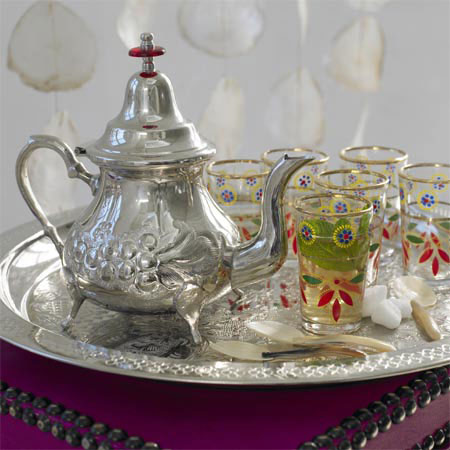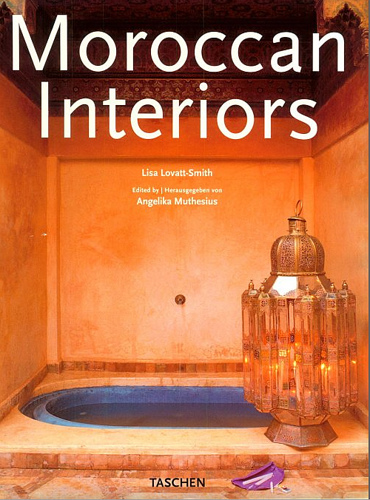Moroccan Cuisine... a primer holidays
All right we had a question thread earlier about Moroccan Food. Now I am not an expert on it by any means but I do my fair share of using their wonderful spices and flavor combinations, so lets try this thread again with a little added information and goodness.
Let's start with Wikipedia's description:
Moroccan cuisine is extremely diverse, thanks to Morocco's interaction with other cultures and nations over the centuries. Moroccan cuisine has been subject to Berber, Moorish, Mediterranean, and Arab influences. The cooks in the royal kitchens of Fez, Meknes, Marrakesh, Rabat and Tetouan refined it over the centuries and created the basis for what is known as Moroccan cuisine today.
Spices are used extensively in Moroccan food. While spices have been imported to Morocco for thousands of years, many ingredients, like saffron from Tiliouine, mint and olives from Meknes, and oranges and lemons from Fez, are home-grown. Common spices include karfa (cinnamon), kamoun (cumin), kharkoum (turmeric), skinjbir (ginger), libzar (pepper) , tahmira (paprika), anise seed, sesame seeds, qesbour (coriander), maadnous (parsley), zaafran beldi (saffron) and mint.
First let's talk about Morocco.
Morocco is in many ways a country apart. It nestles on the northwestern tip of Africa, separated from the rest of the continent by the towering Atlas Mountains and by the Sahara itself. Its climate, geography, and history are all more closely related to the Mediterranean than to the rest of Africa, and for this reason visitors are often struck by the odd sensation of having not quite reached Africa in Morocco. In the north, its fine beaches, lush highland valleys, and evocative old cities reinforce this impression. Yet, as one moves south and east, into and over the starkly beautiful ranges of the Atlases, Morocco's Mediterranean character melts away like a mirage. The Sahara stretches out to the horizon, and forbidding kasbahs stare.
Nomads called Berbers were the first inhabitants of Morocco over two thousand years ago. They used local ingredients, such as olives, figs, and dates, to prepare lamb and poultry stews. Over time, traders and conquering nations introduced new food customs. Among them were the Phoenicians, Carthaginians, and Romans. However, the strongest influence on native cooking was the Arab invasion in the seventh century A.D.
The Arabs brought with them new breads and other foods made from grains. They introduced spices including cinnamon, ginger, saffron, cumin, and caraway. They also introduced sweet-and-sour cooking, which they had learned from the Persians. Moors from Andalusia in southern Spain also influenced Moroccan cooking. The pastilla, or bisteeya, a popular pigeon pie in Morocco, was originally a Moorish dish. In modern times, the French and the British made contributions to Moroccan cuisine.
Morocco, unlike most other African countries, produces all the food it needs to feed its people. Its many home-grown fruits and vegetables include oranges, melons, tomatoes, sweet and hot peppers, and potatoes. Five more native products that are especially important in Moroccan cooking are lemons, olives, figs, dates, and almonds. Located on the coast of the Mediterranean Sea, the country is rich in fish and seafood. Beef is not plentiful, so meals are usually built around lamb or poultry.
Flat, round Moroccan bread is eaten at every meal. The Moroccan national dish is the tajine, a lamb or poultry stew. Other common ingredients may include almonds, hard-boiled eggs, prunes, lemons, tomatoes, and other vegetables. The tajine, like other Moroccan dishes, is known for its distinctive flavoring, which comes from spices including saffron, cumin, coriander, cinnamon, ginger, and ground red pepper. The tajine's name is taken from the distinctive earthenware dish with a cone-shaped top in which it is cooked and served. Another Moroccan dietary staple is couscous, made from fine grains of a wheat product called semolina. It is served many different ways, with vegetables, meat, or seafood.
Sweets play a very important role in the Moroccan diet. Every household has a supply of homemade sweet desserts made from almonds, honey, and other ingredients. Mint tea is served with every meal in Morocco. It is sweetened while it is still in the pot.
So let's talk about Moroccan Mint Tea.
The method of preparation of atai is relatively complex and varies from region to region. It is normally sweeter in the north of Morocco than in the south, and in some places, pine nuts are added. In the winter, if mint is rare, sometimes leaves of wormwood (chiba or sheeba in Moroccan Arabic) are substituted for (or used to complement) the mint, giving the tea a distinctly bitter flavor. Lemon Verbena (louiza in Moroccan) is also used to give it a lemony flavor.
Moroccan tea being served. It is poured from a distance to produce a foam on the tea.
The typical green tea used is a gunpowder tea variety imported from China. A simple and practical method runs as follows:
In a teapot, combine two teaspoons of tea-leaf with half a litre of boiling water. Allow it to steep for at least fifteen minutes. Without stirring, filter the mixture into a different stainless steel pot, so that the tea leaves and coarse powder are removed. Add sugar (about one teaspoon per decilitre).
Bring to boil over a medium heat. This important step in the preparation process allows the sugar to undergo hydrolysis, giving the tea its distinctive taste. If desired, add fresh mint leaves to the teapot or directly to the cup. Remember to remove the mint within two minutes, as it can give some people acid reflux.
Traditionally the tea is served three times, and the amount of time the tea has been steeping gives each of the three glasses of tea a unique flavor, described in this famous proverb:
Le premier verre est aussi amer que la vie,
le deuxième est aussi fort que l'amour,
le troisième est aussi doux que la mort.
The first glass is as bitter as life,
the second glass is as strong as love,
the third glass is as gentle as death.
Okay couscous. A staple. It seems like everything is served with couscous or
Matlouh (more on that later). Coucous is made from flour usually. In fact it is a very small pasta technically. Couscous can be bought at most stores, preparing is as simple as placing it in a bowl, pouring really hot water on it and covering it then wandering off for 15 minutes. Uncover and fluff it witha fork and its ready. Mix in everything you want. I like dried apricots and mint leaves if I am just eating couscous. Or leave it plain and put it on a plate, ladle out your tagine wonderfulness on top of it.
morocco culture,moroccan food,morocco food,moroccan cuisine,morocco beaches,moroccan meal,beaches in morocco,moroccan culture,hercules cave,hercules cave morocco

































